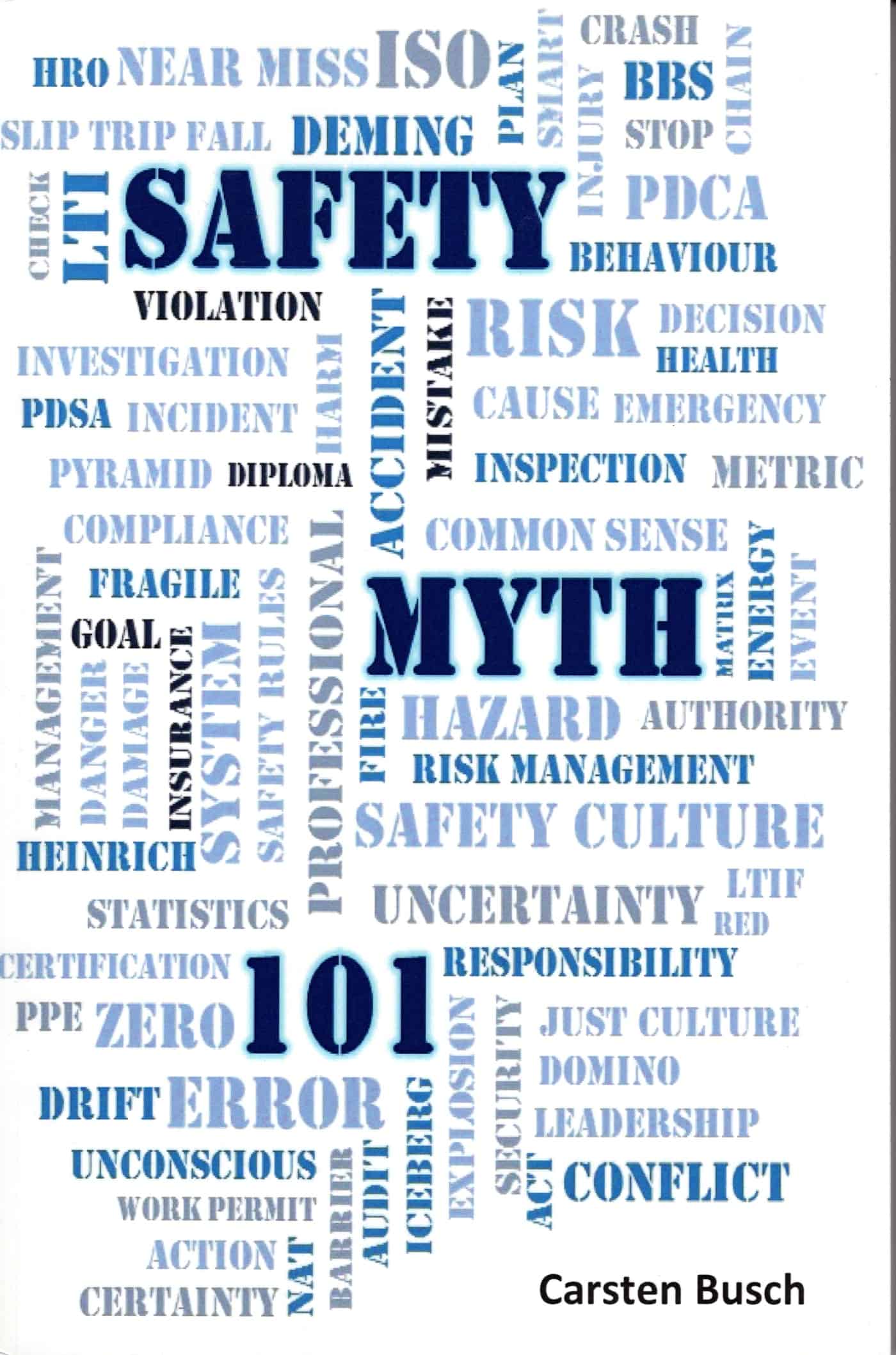The 2nd episode of the Cabbage Salad and Safety podcast is now available.
Continue reading “Who is responsible for workplace safety? – Podcast”
The 2nd episode of the Cabbage Salad and Safety podcast is now available.
Continue reading “Who is responsible for workplace safety? – Podcast”
 Carsten Busch has self-published “Safety Myth 101” – a book that is one of the most comprehensive discussions on contemporary approaches to occupational health and safety (OHS). But it is also riddled with the problems of many self-published books – the lack of a strong and tough editor, an unattractive presentation and a mess of footnotes, references and endnotes. The content is very good which makes reading this book a frustrating experience.
Carsten Busch has self-published “Safety Myth 101” – a book that is one of the most comprehensive discussions on contemporary approaches to occupational health and safety (OHS). But it is also riddled with the problems of many self-published books – the lack of a strong and tough editor, an unattractive presentation and a mess of footnotes, references and endnotes. The content is very good which makes reading this book a frustrating experience.
I can’t help thinking that the book would have been more effective in a more modern online format that would have allowed for word searches, hyperlinks and interaction with readers. In fact, a wiki may have been the best option for Busch’s very valuable content. But what of this valuable content? Continue reading “Great safety book let down by the format”
Many Australians expressed concerns over the potential workplace health and safety impacts of various free trade agreements Australia has entered into over the last few years. Those concerns may be starting to manifest if a report in The Age newspaper on 4 June 2016 is correct. Continue reading “OHS training in strife again”
Two recent occupational health and safety (OHS) prosecutions in South Australia related to labour hire employees and providers indicate changes in enforcement approach and clues for change as they illustrate how some people and companies have almost no regard for the safety of its employees.
According to a SafeWorkSA media release dated 28 May 2016 (not available online at the time of writing):
“The Industrial Court convicted Queensland based labour hire company, Fix Force (Qld) Pty Ltd, and imposed a penalty of $150 000 plus court costs.
On 22 October 2012, Mr Clinton Benson, a contracted employee on the South Road Superway project, suffered life threatening injuries when his head was crushed between a lifting arm and welding table.
Following investigation by SafeWork SA, Fix Force (Qld) Pty Ltd was charged with offences under the then Occupational Health Safety and Welfare Act 1986 (SA), for failure to ensure its employee was safe from injury and risk to health whist at work, as far as was reasonably practicable.”
Continue reading “Miserable failures in OHS of labour hire workers”
Dolly Parton sang about working 9 to 5, asked “what a way to make a living” and asserted that it would drive you crazy if you let it. Many workers would look on a shift of only 9 to 5 as a luxury. ABC Radio in Brisbane played this song as an introduction to a series of radio interviews about workplace safety in which myself and Professor Niki Ellis participated on 9 May 2016.
Curiously the interview, part of their The Juggle series, occurs in the Drive time slot of 4pm to 6pm but the discussion was almost all about occupational health and safety (OHS) in the office environment. If 9 to 5 still exists anywhere, the audience for office safety information was busy. It would have been interesting to talk about OHS and work vehicles. Continue reading “Two ABC radio broadcasts on OHS”
At a recent seminar on managing serious workplace incidents, there was a brief discussion about how evidence is collected and controlled. The response from the panel was that one should always assume that conversations are always being recorded or have the capacity to be. A non-safety example of this appeared in The Age newspaper recently. It appears that someone recorded the Royal Australasian College of Surgeon’s examination process and the recording included discriminatory comments. Two examiners have been stood down and the College is investigating the examination processes. Continue reading “There is no such thing as a Cone of Silence, accept the reality”
On the eve of International Workers Memorial Day, I attended a seminar about the management of fatalities and serious injuries conducted by a group of risk management and insurance agents. Prevention was not on the agenda which led to some surprising statements.